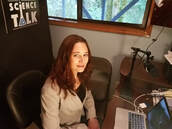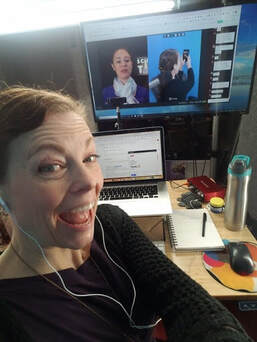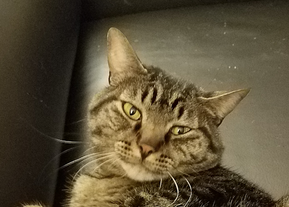In three short weeks we transitioned from our plans for a face-to-face (FTF) conference to virtual live-streamed event. While there were a few hiccups (and cats!), overall the event was a major success, and feedback from the post-conference survey has been overwhelmingly positive. Several organizations have asked us about the transition to a virtual conference, so here goes…a brief summary of our strategy and some lessons learned.
The Tech

We used the Crowdcast platform instead of a more familiar technology like Zoom. Crowdcast has a great feature – the green room. This allows the host and presenter(s) to meet privately and test the presenter’s audio and video before the session goes live. While the host and presenter are working, attendees can still enter the session “room” and chat with one another over text. The text chat was a big hit overall – lots of chat traffic during sessions, including people posting links to resources mentioned during talks.
Crowdcast allows up to four simultaneous video shares, which works great for keynotes and panels but posed a challenge for our fast-pitch session, where conference attendees can sign up to give a one-minute elevator pitch to the group. Coordinating screen sharing permissions to invite fast-pitch speakers was complicated, particularly for speakers who didn’t have a great internet connection. Connection speed is always a hurdle for live streaming. We encouraged all presenters to test their connection prior to the conference and to set up a hard-wired ethernet connection if possible. One speaker even sent his kids out to play in the yard during his talk, just so they wouldn’t eat up bandwidth!
The Program

We offered all conference presenters the option to present virtually or to move their presentations to Science Talk ‘21. Our goal was to provide a shorter but still action-packed conference. We therefore scaled back to provide 5 hours of content a day, rather than the usual 8-10 hours; 5 hours is enough to sit in front of a computer! In addition to traditional talks and panels, we invited poster presenters to give 3-minute lightning talks about their posters; we then posted the posters on our online forum for later viewing.
For the virtual conference, we developed a few new sessions – breakout discussions, and a “fireside” chat (bring your own fire!) about science communication during the COVID-19 pandemic. The coronavirus chat was obviously popular during this highly dynamic and uncertain time and the audience asked insightful questions during the 90-minute session. Attendees submitted questions using the “ask a question” feature in Crowdcast, which allows other attendees to then upvote questions. The session moderators selected the most popular questions and posed them to the expert panel, which kept the session moving.
The breakouts each focused on a different theme (connecting science and art, reaching underserved audiences, etc.) and conference attendees could pick the session they wished to attend, or jump between sessions, just like you can move between rooms at a FTF conference. As small, discussed-focused sessions, the breakouts would have benefitted from a platform like Zoom or Google Hangouts where all participants could simultaneously share audio and video. Mixing technologies might work better, although more platforms also equates to more opportunities for something to break.
We also scheduled coffee breaks with “rooms” for people to text chat while they got their snacks. Over 100 people joined these breaks and networked with other conference participants – not quite the same as FTF, but still a good experience. Finally, we ended with a virtual dance party (thanks DJ Kiki), with music, virtual toasts, and a disco ball.
The Lessons

Having an expert makes all the difference. VP Public Relations Dr. Kiki Sanford (Broader Impacts Productions) is a pro at live-streamed events and she controlled the process and worked with our presenters to prepare them in advance. I highly recommend her services as tech expert and event MC.
No platform is perfect! We had some trouble with Crowdcast, particularly Friday morning. Test drive the tech before the event, but plan for contingencies, and ask your attendees to be forgiving.
Just like people at a FTF event sometimes need to ask for directions, attendees at a virtual conference have questions. We developed a FAQ for common questions, then during the conference Science Talk staff monitored our email account and online community site to address questions in (close to) real time. Still, we could have anticipated more of the questions and included them in the FAQ. There was a lot of understandable confusion during the transition from FTF to virtual.
Cats derail conversation! One panelist’s cat clearly had important thoughts about communication between scientists and journalists. The panel continued in a professional manner, but the text chat erupted with virtual cries of “CAT!” and lots of cat emojis. I’ve even received requests for live cats at next year’s FTF conference.
The Take-Away

I was reluctant to try a live-streamed conference – Kiki did a lot of arm twisting to convince me! She was right. People are home and want to connect. Even outside of a pandemic, some people don’t have funds or time for conference travel or want to reduce their carbon footprint. A virtual conference increases accessibility. We had participants from four continents, which wouldn’t happen FTF.
Science Talk ‘21 will happen FTF in Portland, OR on March 25-26. We will also offer a live-stream option to allow everyone to participate, from anywhere in the world. But…probably no cats.



Leave a Reply